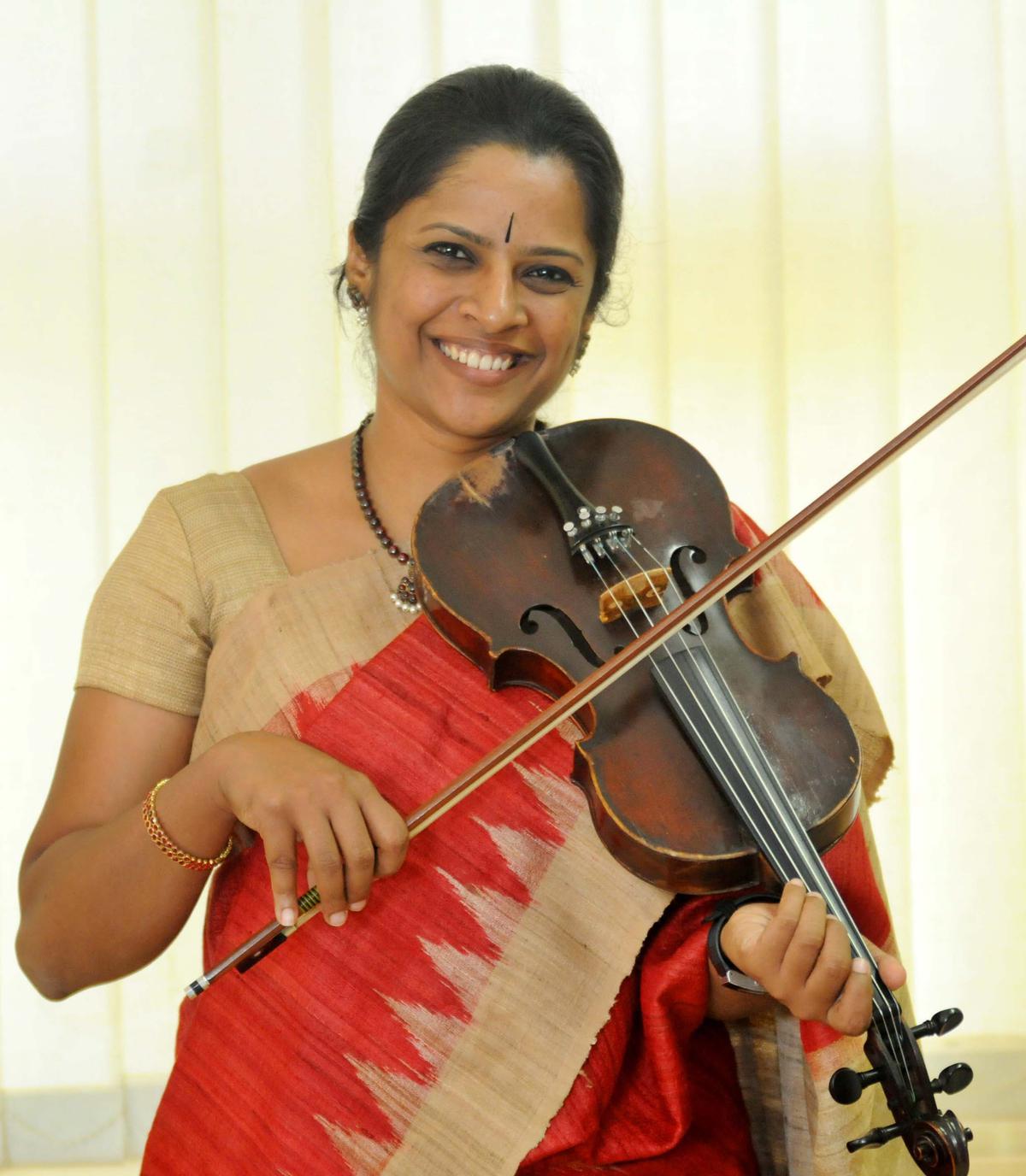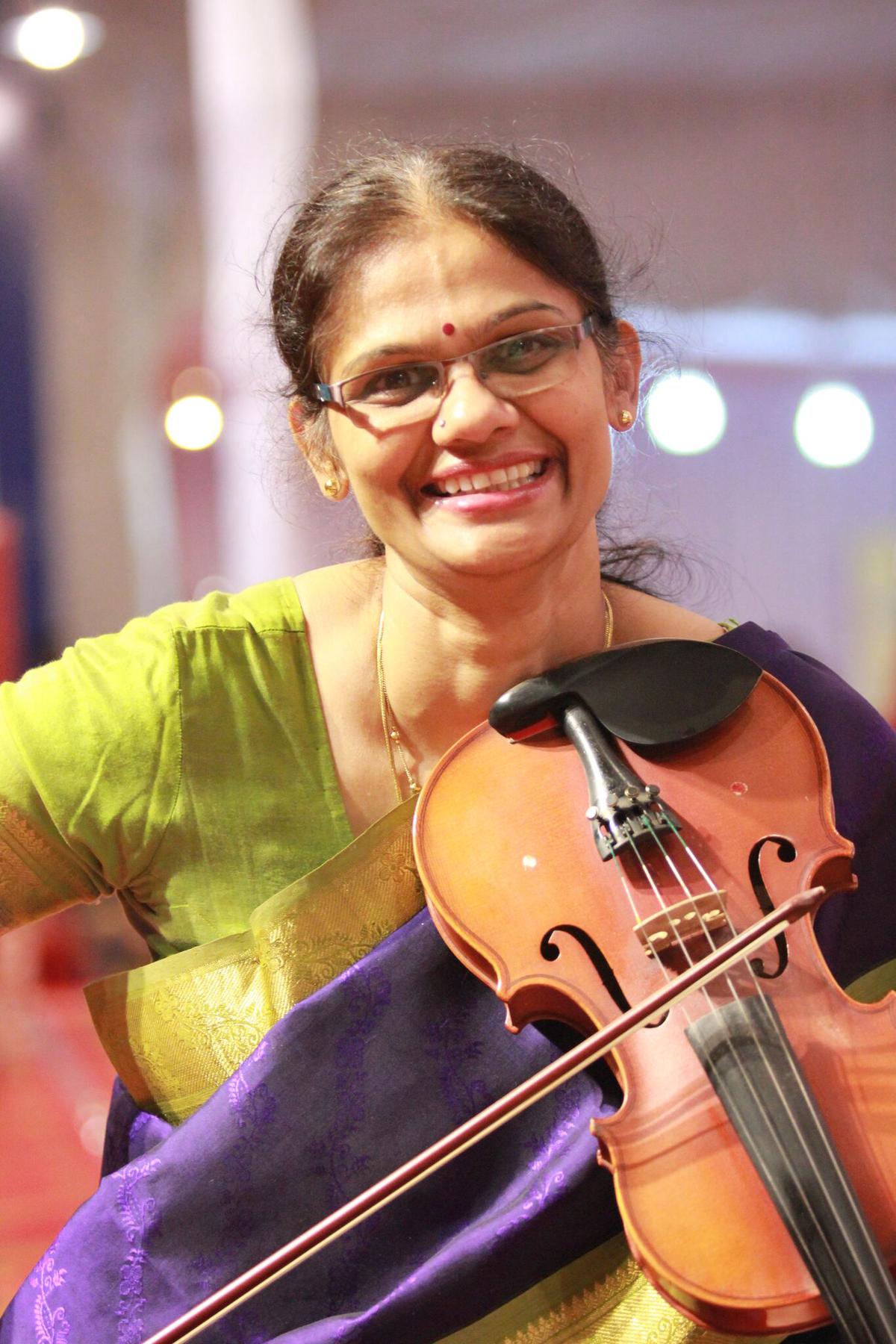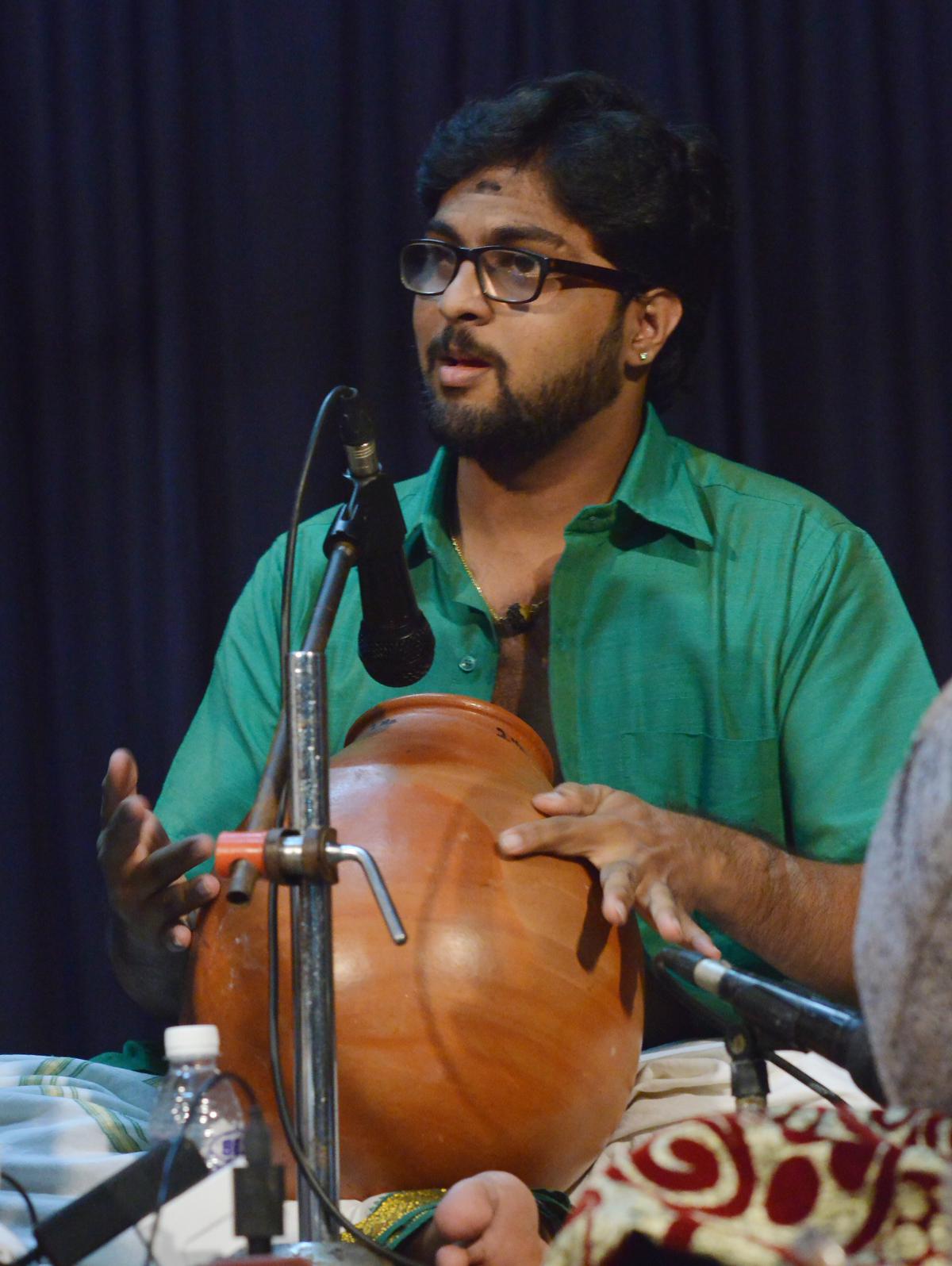On YouTube is a K.V. Narayanaswamy concert (https://www.youtube.com/watch?v=stbaZ4s3dZ4) listing co-artistes M. Chandrasekaran, Umayalpuram Sivaraman and G. Harishankar. Presenting ‘Vathapi ganapathim’ after a shloka, KVN sings a classic sangati at the 2-minute 52-second mark when, suddenly, mid-line, the kanjira comes in – for all of 9-10 aksharams – clear, ringing, and a goosebump moment. The effect lingers, illustrating the power of accompanying artistes at their skilled, appropriate and elevating best.
Though identified by the headliner’s name, Carnatic concerts are, in fact, teamwork — the accompanying artistes are an indivisible part of the overall experience. An ideal accompanist is one whose contribution cannot be decanted from the overall concert.
Has accompaniment evolved in the last 50-70 years? At the overarching level, at least three aspects are observed.
Firstly, very few male musicians performed alongside women earlier. Now, though the oldest vanguard still does not, many youngsters do.
Secondly, due to less repetition of compositions, complete in-sync accompaniment seems rarer. Vocalist N. Vijay Siva and mridangist Arun Prakash point out that more audience and peer pressure push artistes to constantly showcase new repertoire.
According to Arun Prakash, yesteryear stalwarts offered a balance of well-known, oft-repeated pieces with less-familiar ones that eventually became requested and ‘common’.
Mridangist K. Arun Prakash in a concert Kartik Fine Arts, Chennai, on December 03, 2014.
| Photo Credit:
K.V. SRINIVASAN
Wide range of sources
An added complication for accompanists today is musicians learning from a wide variety of sources and patantarams, making predictability very difficult. The recordings of veteran musicians reveal many songs appearing regularly, allowing the then (fewer) accompanying artistes to predict and respond with near-perfection.
Trichy Sankaran.
| Photo Credit:
GANESAN V
Mridangist Trichy Sankaran recollects Pazhani Subramania Pillai’s perfect anticipation of Madurai Mani Iyer’s pause at the upper shadjam and the singer’s audible enjoyment.
Thirdly, while sound technology has advanced significantly, in reality, the vast majority of concerts have far from ideal soundscapes, with improper balance for artistes and audiences, necessitating constant adjustment amidst performance — detracting from the overall experience.
Sankaran thinks the quality of accompaniment has deteriorated, with less effort invested into customising playing for the various rubrics in the music.

Akkarai Subhalakshmi.
| Photo Credit:
PERIASAMY M
Violinist and vocalist Akkarai Subhalakshmi also believes standards have fallen. “I was taught to seek out new challenges,” she says, stating that most accompanists have settled into formulaic comfort zones that elicit applause. She worries that today’s artistes can justify anything as personal choice, circumventing all quality benchmarks.
Vijay Siva, who provided vocal support to his guru D.K. Jayaraman for years, sees a mixed bag. He says artistes are very professional on stage now, and don’t allow off-stage squabbles or disagreements to affect their performances. However, he feels that the field is not utilising the numerous communication channels to produce completely harmonious music as one unified entity. “We do not plan or share our thoughts. If we do so, and in depth, there will be improved camaraderie, understanding and better music.”
An accompanying violinist’s role is described by KVN in a 1986 interview for Sruti magazine. “A violin accompanist…should invariably be more knowledgeable than the singer. Because he has to play for so many main performers, he necessarily has to know more kritis and be better at technique and be familiar with a variety of styles. But all the same, he has to underplay and subjugate his artistry to that of the singer.” He also says that violinists need not compete for duration, referencing those who played only for a fraction of the duration of the vocalist. A general guideline most accompanying violinists still mention is about 60 per cent of the headliner’s duration. Today, however, each headliner can have very different expectations, increasing the accompanists’ dilemma.

Charulatha Ramanujam.
| Photo Credit:
The Hindu
Early on in her career, accompanying a senior vocalist, violinist Charulatha Ramanujam played a nuance of the raga that the vocalist had not sung. She was told she ought not to have done so. Of late, she has also encountered artistes who request her to play facets that they did not present. A new development in certain concerts is the violinist as a melodic equal to the main artiste – in such concerts, the violinist has to alternate between accompanying and independent playing. The semi-circular seating arrangement furthers this visually, but many concerts in this configuration still observe traditional roles.
‘Mardala thaala gathulu theliyakane, mardincuta sukhama?’ (Is it enjoyable to thump the percussion instrument without even knowing beat and pace?) asks Tyagaraja in his composition ‘Svara raga sudha’ — indeed, some of today’s percussionists are so loud that audiences hear only noise, the main artistes dissipated to mere drones.
Trichy Sankaran agrees, stating that many of today’s percussionists are more ‘sollu-ful’ (replete in rhythmic syllables) than soulful, not delineating active and passive drumming or giving enough pauses that allow for reposeful enjoyment. Sankaran suggests that virtuosity be reserved for the tani avartanam, which should not exceed 10 minutes in a two-hour concert. Now, most are longer.

Ghatam artiste G. Chandrasekara Sharma.
| Photo Credit:
KRISHNAN VV
There have been multiple, significant changes in upapakkavadyam. Unlike earlier, a ghatam, kanjira or morsing is now practically standard in the concerts of established artistes. There have also been concerts, in the past few years, featuring no mridangam, with a ‘second’ percussion alone and others where the second percussionist is consciously accorded the status of first percussion, with the mridangist present. Second percussion artistes are now listed properly in concert schedules, clearly visible in semi-circular seating arrangements and have their own fan bases. Kanjira artiste Anirudh Athreya and ghatam artiste G. Chandrasekara Sharma (nephew of T.H. Vinayakram) say this makes them feel like equal contributors, with more responsibility vested on them.
In vintage recordings, upapakkavadyam artistes are often heard only faintly, due to being seated behind with less localised micing, and their names are frequently not listed either. Chandrasekara mentions that there is room for their creativity now — a huge contrast from the times of V. Nagarajan (Anirudh’s great-uncle) and others such as E.M. Subramaniam, G. Harishankar and Vikku Vinayakram (in their early career) who struggled to even get opportunities. When they were on stage, they were given little playing time, allowed to drum only when the mridangist permitted them to, and were even stopped mid-flow. This can still be seen in some concerts today featuring certain, generally older, mridangists.
From the listener’s perspective, E.S. Ramanujam, a lifelong discerning connoisseur, wonders if today’s accompanists are more individualistic — serving to showcase their own skill and virtuosity rather than focussing on genuine teamwork — resulting in less ‘sowkhyam’.
While there are undoubtedly many points to ponder and much scope for betterment, today’s concert stage is definitely a more egalitarian platform.